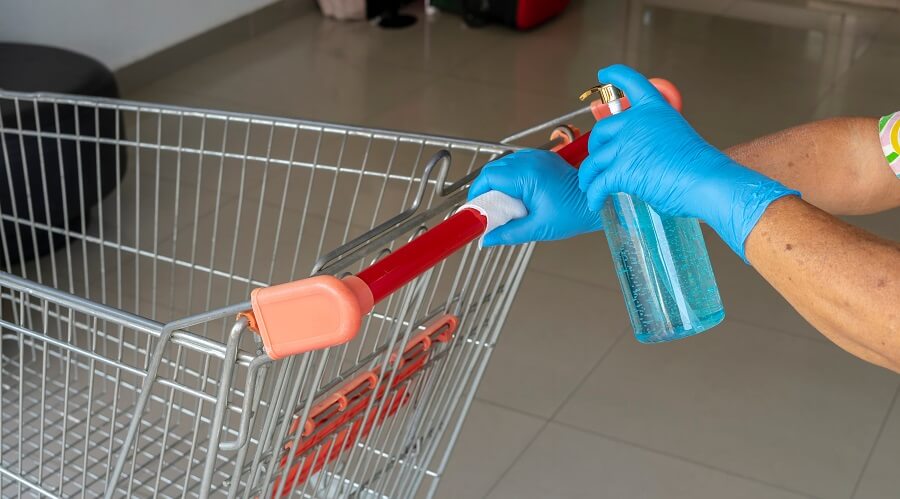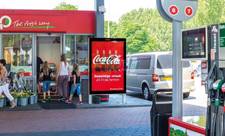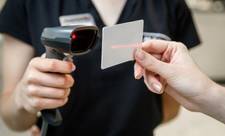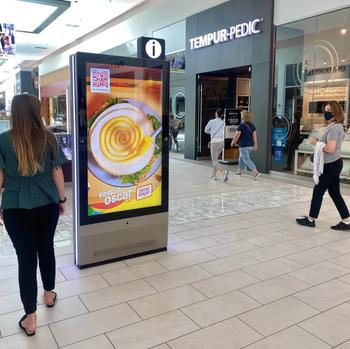In retail stores, bars, restaurants and many other kinds of establishments, research shows that a good point-of-purchase, or POP display, can be key to capturing customer attention and driving greater revenue. According to a Popspots report titled “Why the checkout line is retail’s next gold mine”, 62% of shoppers said they would be more likely to look for a product advertised at the point of purchase on a future visit. What’s more, 43% said they would be likely to purchase the advertised product right away.
Unsurprisingly, POP displays have become common fixtures of retail environments. However, there’s greater opportunity beyond the typical static display, particularly now that we find ourselves in the midst of a post-pandemic rethinking of the retail experience. Creating POP displays from digital screens can go a long way towards taking advantage of these opportunities.
Use digital POP displays to fuel post-COVID success
Across much of the world, we’re seeing an easing of the COVID-19 containment measures that have been in place for many months. It’s welcome news for retailers, but it doesn’t mean a return to the way things used to be. Habits and preferences developed during the pandemic are expected to last, and it’s up to retailers to adapt. Digital POP displays can help.
For instance, according to Mintel, it’s likely that there will be an ongoing demand for reassurance that cleanliness standards are being observed in retail. Including messaging in your POP displays’ content loops to explain cleaning frequencies, or even just that keeping a clean store is a priority, is an easy step to take to keep visitors happy.

Another trend, the ongoing increase in the adoption of buy-online, pick up in store (BOPIS) shopping, could be enhanced with displays placed near the pick-up counter. Using these to promote compelling sales or other promotions might entice the people waiting in line to make an additional buy while they are already in store.
These are just a couple of examples of the possibilities that digital screens can offer to enhance your post-pandemic recovery, and many of the other points in this article can also contribute to this goal. Digital displays, in other words, are a smart investment for putting retail businesses back on track over the rest of this year and beyond.
Create lasting impact with moving content on POP displays
POP displays are meant to draw consumer attention to products in a sales environment. However, they often take the form of simple, static imagery and messaging. Examples might include posters, cardboard stands, and so on.
Research demonstrates that these forms of POP display are suboptimal. A report titled “A neuroscience view of full motion in DOOH” conducted by Neuro-Insight for Ocean Outdoor demonstrated that moving digital signage imagery is 2.5 times as effective at creating an emotional response than static images are. This also corresponded to greater recall of the viewed imagery later on.
For retailers looking to go digital, deploying screens at the checkout and in carefully selected locations throughout the rest of the store will produce a more noticeable and compelling shopping experience that drives new sales.
Example: These ads presented on Primesight’s network use motion to attract greater attention.
Digital signage allows for adaptable promotions
An additional pitfall of the static POP display is that it cannot adapt to ambient conditions. With digital POP screens, ads can get much smarter.
Leading digital signage software platforms have extensible APIs that enable the integration of other data streams. For retailers, this can allow the integration of point-of-sale and inventory systems, weather feeds, sports scores, etc. By connecting these platforms, it becomes possible to tie the deals presented on an establishments signage to ambient conditions. If it is cold outside, shoppers in a store may be presented with more ads for coats or sweaters. If a star player is on a hot streak, their jersey may be featured more prominently. Similarly, if a location runs out of an advertised product, its screens can automatically display different promotions instead.
Digital retail displays are meant to encourage impulse purchases. By ensuring ads are always relevant and for available products, retail locations can better capitalize on this potential.
Example: MMD Media ties POS data into digital POP displays located in and around its network of gas stations, ensuring advertised promotions are always available.
Digital POP displays enhance the effectiveness of membership programs
The modern consumer has demonstrated that they are willing to exchange data for greater access and better deals, and little proves this better than the enormous popularity of loyalty and membership programs.
According to Bond Brand Loyalty’, 77% of consumers say loyalty programs make them more likely to be a repeat customer of the associated brand. About 63% of consumers go so far as to say that they will alter their spending just to get the greatest possible benefit from their loyalty program.
Digital point-of-purchase signage offers a great opportunity to highlight membership and loyalty programs—as well as related promotions—in-store and in a visually appealing way. They can also, however, tie into loyalty program data to create even more compelling retail experiences.
By integrating digital POP signage with membership program data, retailers can trigger the delivery of creative relevant to individual consumers whenever they scan their card in the store. This can have a big impact, as research by Adlucent shows that 71% of consumers want ads tailored to their interests and shopping history. For retailers invested in both digital POP displays and loyalty programs, this approach can help unlock the most value from both channels.
Digital displays can entertain with interactive experiences
Research by Gartner found that 89% of companies expect to compete mostly on the basis of customer experience. To stand out for customer experience in the competitive retail environment, it’s important to look beyond friendly smiles and knowledgeability. Instead, it’s best to look for ways to deliver a compelling store experience that customers won’t be able to find elsewhere.
Toward this end, digital POP screens can help retailers build interactive, highly visual experiences that delight and inform. From options to try on clothes virtually to on-demand assistance and well beyond, there are many ways that touchscreen technology can be used to drive greater engagement and leave customers with a strong, positive connection with a retailer.
Example: An IGA grocery store in Canada rolled out a temporary “Live Harvesting” installation that allowed customers to select rooftop produce to be hand-picked and delivered to them in the store within minutes. It’s a great example of the kind of unique, memorable experience made possible with a digital POP display.
Digital displays put granular data at your fingertips
How many people look at the average POP display? How long do they look? What are the demographic breakdowns of people who look at different promotions? These are questions that few retailers would be in a position to answer with accuracy, but that need not be the case.
Digital POP displays can easily integrate analytics tools that enable retailers to get a much clearer picture of who among their customers are looking at their displays. With cameras and anonymous data collection functionality, they can help create detailed reports that reveal which promotions most appeal to which segments of a customer base.
Other potential uses, including things as simple as getting reports that compare the number of promotion plays with the total sales for the promoted goods, are also easy to accomplish with a good digital POP solution. The result for the retailer is a system that provides ample data for continuous improvement over time, helping ensure maximum effectiveness of POP displays over time.
Do you want to bring digital POP displays into your retail environment?
See how Broadsign can help make it happen!










